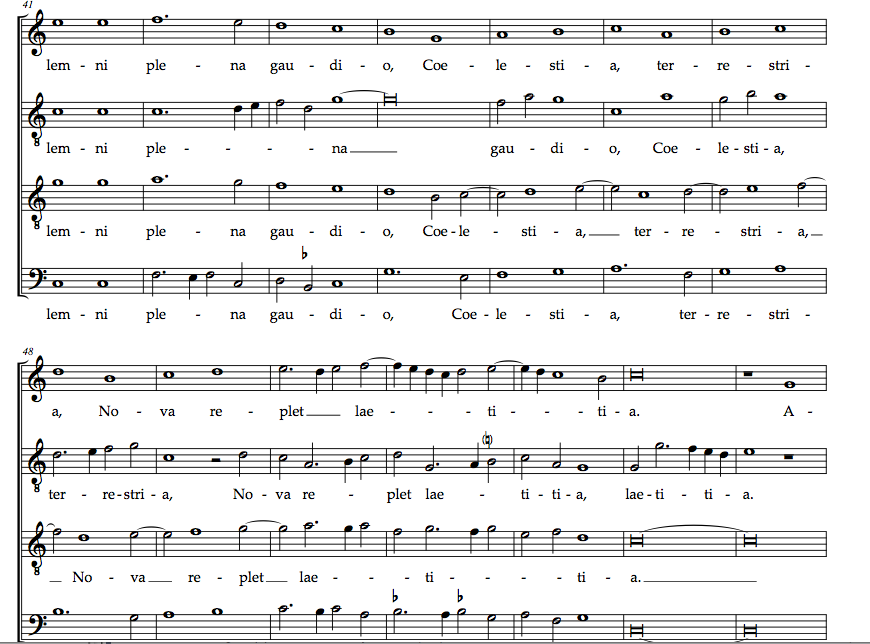This is a selection from Josquin’s Ave Maria. On the text Coelestia, terrestria, Nova replet laetitia (click the link to listen), look at what he does harmonically with the baseline. The soprano and bass move in measure 45 in parallel motion, and because the soprano moves toward a leading tone on the upbeat to m. 46, we expect a I chord on the downbeat. But he tricks us. He’s keeping moving up the scale—the bass goes to an A, creating vi. And, the same sequence repeats a step up, but that means—yes, shocking, shocking—he’s going to a vii chord. Raw diminished vii tonality in a 15th c. work.* It creates total instability and drive toward the protracted I that comes from the third time the sequence is repeated. But once we finally arrive there, a surprise creeps in the alto line. It actually goes below the bass and subverts the tonic with an A, creating another vi. Josquin is simply refusing to let us rest in a tonic. In fact, he doesn’t until way later, in measure 53. And even then, the tenor doesn’t really end so much as launch us into the next phrase.

So. Ask yourself—who is the composer in the 19th century famous for the relentless climax, the climax that refused to ever give you a tonic without a fight? It was Wagner. It’s a concept that requires a mature understanding of harmony. Yet again, I’m frustrated at music history analysis. Why do we have a positivist outlook that views Medieval music as groping for a V-I cadence? I’ve argued before that this is simply viewing the past through our age’s peculiarly post-Wagnerian sunglasses (aviators, they are, and darn ugly). This seems like another proof of that very point. Josquin knows exactly what he’s doing harmonically. It’s just that he doesn’t have the same set of compositional priorities we do.
There’s a similar occurrence in Josquin’s Absalon fili mi that I’d also like to post here soon. There, Josquin’s clearly using a leading tone to make us expect a cadential point that never occurs. Just like…Wagner.
—
*The recording I linked to, ironically, interprets a fixtus on the B in the bass that creates the vii, making it a VII (creating a juicy dissonance with the alto line). The Hilliard Ensemble and Sex Chordae both reject this and (I presume) take the manuscript at face value. Either way, I think, creates the drive, but the vii is, in a “technological” sense, more edgy.
